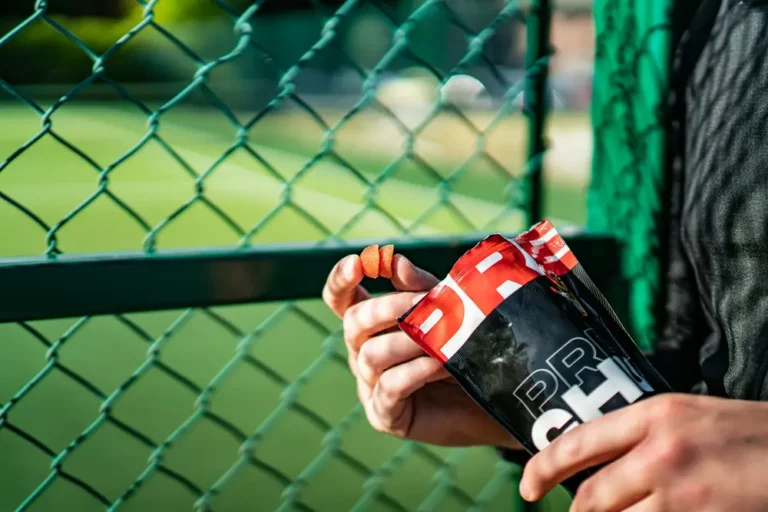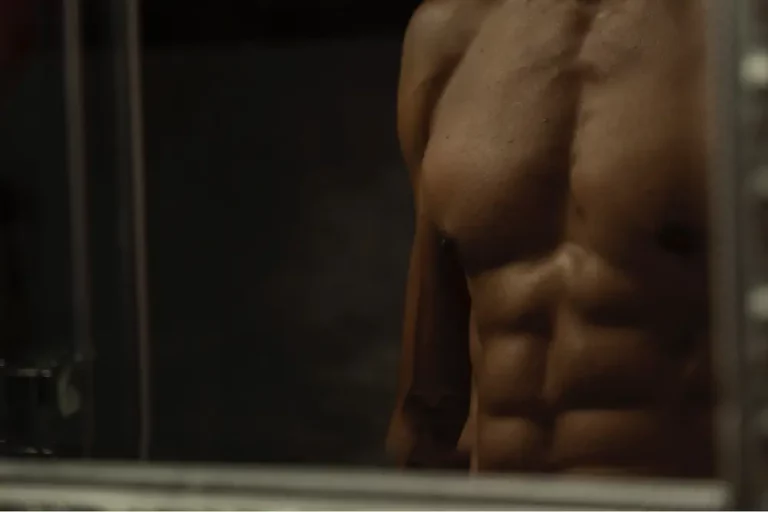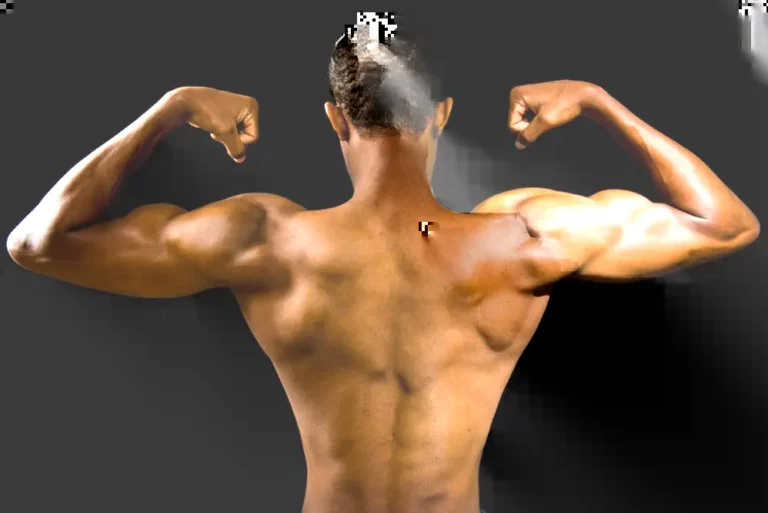Gap Between Pecs: Unveiling Truths Behind Chest Development
Ever noticed that gap between your pecs and wondered why it’s there, or maybe why it’s more pronounced in you than in others? You’re not alone. The truth is that chest gaps are pretty common, and they come down to a mix of genetics, muscle development, and, sometimes, the aftermath of injuries or implants.
While some folks might dream of that seamless, Arnold Schwarzenegger-style chest, it’s essential to know that perfect pec genetics are rare. And guess what? Having a gap doesn’t mean your chest muscles are weak or that you’ve been slacking at the gym. Even powerhouses like Terry Crews sport a pec gap with pride. So, let’s dive into what causes these gaps and how they vary from person to person.
Understanding the Gap Between Pecs
The gap between pecs, often noticed by fitness enthusiasts and bodybuilders, is a topic of curiosity and sometimes concern. Let’s dive into what contributes to this anatomical feature and clear up some common misconceptions about it.
Anatomy of the Chest Muscles
To understand the gap, it’s crucial to grasp the basic anatomy of the chest muscles. The pecs, or pectoralis major muscles, are the primary muscles that form the chest. They originate from the sternum (breastbone) and the clavicle (collarbone) and are inserted into the upper humerus (upper arm bone). They’re responsible for movements such as pushing and lifting. The structure of the chest muscles, including where they attach to the sternum, plays a significant role in the presence and size of the chest gap.
What Causes a Chest Gap?
Several factors contribute to the appearance and size of the pec gap, ranging from genetics to muscle development. It’s a common misconception that a gap indicates weak chest muscles or a lack of effort in one’s training regimen. However, the truth is far from this. The shape and insertion points of the pectoralis major, determined by genetics, significantly affect the gap. Injury, surgical procedures, and even implants can alter the chest’s appearance, impacting the gap as well. Variation exists among individuals, but it’s essential to understand that a gap isn’t necessarily a sign of underdevelopment or physical ailment.
Genetics vs. Training: Debunking Myths
The belief that training can entirely eliminate a chest gap is widespread yet misguided. While exercises can indeed enhance muscle thickness and overall chest appearance, they cannot modify the genetic makeup determining muscle insertion points. For instance, no amount of targeted exercises can change where the muscle attaches to the sternum. Genetics play a pivotal role in the body’s response to training, including how muscles develop and where fat is distributed, influencing the visibility of a chest gap.
Despite this, varying one’s workout routine to include exercises targeting different angles and muscle fibers, such as cable crossovers, incline bench presses, and close grip bench presses, can optimize chest development. These exercises can make the muscles appear fuller and somewhat reduce the perception of a gap.
The Impact of a Pectoral Gap
When I first began exploring the nuances of bodybuilding and fitness, the topic of a pectoral gap was one that piqued my curiosity. It’s a feature often overlooked, yet it carries significant weight in multiple domains, ranging from aesthetics to functionality, and even extends into psychological realms.
Aesthetic Considerations
For many of us in the fitness community, the appearance of our chest is a major focus. The presence of a pectoral gap can, in some eyes, detract from the “ideal” chest that many strive to achieve. Despite the hard work, dedication, and countless hours spent at the gym, for some, that gap between the pecs can feel like an insurmountable barrier to their aesthetic goals. It’s important to note that the visibility and width of this gap can vary greatly among individuals, primarily due to genetics. Therefore, while we can’t change our genetic makeup, understanding how to enhance the appearance of our pecs through targeted training can offer a sense of control and progress.
Functionality and Performance
Diving deeper, the impact of a pectoral gap isn’t confined to aesthetics alone; it can also influence functionality and physical performance. Initially, I was curious if a wider gap would hinder my strength or limit my ability to perform certain exercises effectively. Through research and personal experience, I’ve learned that while the gap itself doesn’t necessarily impair muscle function, the overall development of the pectoral muscles can have a profound effect on physical capabilities. Strengthening and enlarging the muscles around the sternum can contribute to improved power and endurance, irrespective of the gap. This realization was empowering, underscoring the importance of focusing on what can be enhanced rather than what cannot be changed.
Psychological and Social Aspects
Lastly, the psychological and social implications of a pectoral gap cannot be understated. It’s no secret that our self-image and confidence can be deeply intertwined with our physical appearance. Initially, the gap between my pecs was a source of insecurity, especially in social situations like going to the beach or participating in sports. However, over time, I’ve come to embrace my unique features, including the gap. This journey towards acceptance was instrumental in shaping a healthier relationship with my body and cultivated a resilience that transcends the gym. Sharing experiences and support within the fitness community has also highlighted the diversity of body types, promoting a more inclusive and understanding environment.
Exercises to Minimize the Chest Gap
As I continue to explore ways to enhance our chest aesthetics, it’s pivotal to dive into specific exercises that can help minimize the gap between the pecs. While we’ve discussed the role genetics play, targeted exercises can make a significant difference in how full and connected our chest muscles appear.
Push-ups: Technique and Variations
I’ve always considered push-ups the bread and butter of chest development. Not only are they convenient, requiring no equipment, but they can also be varied to target different parts of the chest. To focus on minimizing the chest gap, I recommend incorporating diamond push-ups into your routine. By positioning your hands close together, you create more tension in the inner chest. Additionally, try elevating your feet to shift more emphasis onto the upper pecs, further developing the chest and reducing the appearance of a gap.
Dips: Executing for Maximum Impact
Dips are another powerhouse move for chest development. To ensure they’re as effective as possible in targeting the gap, I focus on leaning forward during the exercise. This slight adjustment amplifies the load on my pecs rather than my triceps, bolstering the inner and lower chest areas. Remember, the deeper you go, the more you’re challenging your chest, but always listen to your body to avoid overstraining.
Planks: Strengthening the Core and Chest
While not often associated with chest development, planks are excellent for engaging and strengthening the chest muscles alongside the core. To make them more chest-centric, I incorporate side planks with a twist or plank up-downs. These variations engage the chest muscles dynamically, promoting strength and stability, which is fundamental for a well-rounded physique.
Dumbbell Fly: Targeting the Inner Chest
Dumbbell flys are crucial for creating that sought-after chest fullness. By focusing on bringing the weights together with a deliberate, controlled movement, I ensure my inner chest muscles are deeply engaged. Using a slight bend in the elbows helps maintain tension directly on the chest muscles, emphasizing the inner portion.
Close Grip Bench Press: Focusing on Inner Pecs
This variation of the bench press allows me to put more work into my inner chest by positioning my hands closer together on the bar. It’s not just about lifting heavy but also about maintaining a full range of motion to maximize engagement of the inner pecs. I’ve found this to be highly effective in reducing the chest gap.
Hex Press: Enhancing Inner Chest Contraction
The hex press has become a staple in my routine when I’m specifically focusing on the inner chest. By pressing two dumbbells together as I lift, the constant pressure activates the inner pec muscles throughout the exercise. It’s a simple yet highly effective way to enhance inner chest contraction.
Cable Fly Variations: High to Low and Isolateral
Finally, cable flies offer unparalleled versatility for chest development, allowing me to hit the muscles from various angles. I rotate between high-to-low flies to target my lower pecs and isolateral movements, which involves working one side at a time for balanced development. These variations are excellent for sculpting the chest and diminishing the gap.
Embarking on a journey to minimize the chest gap can be both challenging and rewarding. Incorporating these exercises into my routine has not only improved the appearance of my chest but also my overall strength and confidence.
Advanced Training Techniques
When I first started exploring ways to minimize the gap between my pecs, I realized I needed to step up my game with some advanced training techniques. Here’s what I found truly helpful.
Incorporating Resistance Bands
I discovered that adding resistance bands to my chest workouts was a game-changer. These bands add an extra layer of resistance that isn’t limited by gravity, unlike traditional weights. This means that I could target my chest muscles, including those hard-to-reach inner fibers, from unique angles and with a constant tension that dumbbells or barbells just can’t provide.
For example, when I did chest presses or push-ups with a resistance band looped around my back and under my hands, I felt an incredible squeeze in the center of my chest. This constant tension throughout the movement helped me engage my pecs more effectively and, over time, contributed to reducing the appearance of the gap.
Adjusting Angles for Maximum Effectiveness
One thing that became crystal clear to me was the importance of hitting the chest muscles from various angles. By simply adjusting the bench incline during presses or changing my grip and stance during cable flies, I was able to engage different parts of my chest. Close-grip bench presses, for instance, focused more on the inner chest, whereas incline presses targeted the upper pecs, contributing to a fuller look overall.
Additionally, performing cable crossovers with cables set at different heights allowed me to work on the chest from high to low, effectively hitting every fiber of my pecs. It’s fascinating to see how minor tweaks in the angle can lead to significant improvements in muscle engagement and aesthetics.
Lifestyle Adjustments for Optimal Chest Development
Importance of Rest and Recovery
I’ve learned that hitting the gym hard is just part of the equation when it comes to filling out the chest and minimizing any gaps between the pecs. The other part? It’s all about rest and recovery. When we sleep, our bodies get busy repairing the tiny tears in our muscles caused by intense workouts. This process is crucial because it’s during this time that our muscles grow stronger and potentially fuller. Without adequate rest, not only do we miss out on maximizing this growth, but we also risk overtraining, which can lead to increased cortisol levels—hormones that can actually break down muscle tissue and counter our efforts to achieve that chiseled chest.
Stress Management and Its Effects on Muscle Growth
Let’s talk about stress. It’s something I didn’t consider much at first, but stress management plays a pivotal role in muscle development. When we’re stressed, our bodies release cortisol, a hormone that, at high levels, can lead to weight gain and muscle breakdown. It’s a double-edged sword, really; not only does stress make it harder to find the motivation to hit the gym, but it also physically impedes our body’s ability to build and repair muscle. Lowering stress levels through mindfulness, meditation, or even a hobby can, therefore, enhance muscle growth and help in achieving a more uniform chest development.
Balancing Cardio and Strength Training
A lot of people think that focusing solely on strength training is key to building up the chest, but I’ve found that a balance between cardio and strength training is essential. Too much cardio can indeed burn through the muscle we’re trying to build, but just the right amount keeps our heart healthy and body fat levels in check, making those pecs stand out even more. The trick is finding the right balance, which varies from person to person. For me, incorporating short bursts of high-intensity cardio into my routine, alongside dedicated chest days, has been a game-changer in improving overall chest appearance without sacrificing muscle mass.
Conclusion
The gap between your pecs is largely out of your control due to genetics. It’s crucial to remember that this doesn’t reflect your strength or dedication to fitness. What matters most is focusing on what you can change through consistent training and a balanced approach to chest exercises. Embrace your body’s uniqueness and keep pushing forward with realistic goals. After all, perfection lies in the effort, not just in the mirror. Let’s celebrate our individual journeys and the progress we make every day.
FAQ – Frequently Asked Questions
Can genetics affect the appearance of my chest?
Absolutely, genetics play a crucial role in determining the size, shape, and overall appearance of your chest, including aspects like muscle definition and the presence of a chest gap. Although exercise can improve muscle size and definition, it cannot change genetic predispositions.
Is it possible to achieve perfect symmetry in the chest?
Achieving perfect symmetry in your chest, or any body part, is highly unlikely due to natural body asymmetry. However, balanced training can help minimize significant differences in size or strength, making asymmetry less noticeable.
Can exercise change my bone structure or muscle attachment points?
No, exercise can’t alter your bone structure or the points where muscles attach to bones. These factors are determined by your genetics. Exercise can only affect the size and strength of your muscles.







